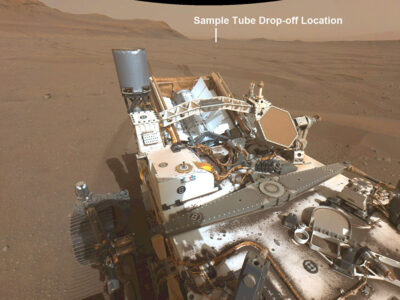NASA’s James Webb Space Telescope successfully launches to space
On Dec. 25, 2021, the Webb space telescope launched off planet Earth at 7:20 a.m. EST (1220 GMT) atop an Ariane 5 rocket built by Arianespace. The space telescope, NASA’s biggest ever built, is headed to L2, or Lagrange Point 2, a stable point in space about 1 million miles from Earth where it will look for the first stars and galaxies in the universe.

James Webb Space
To Explore the Universe
The James Webb Space Telescope is a $10 billion infrared observatory designed to explore the universe in infrared light.
Scientists hope it will help them unravel the mysteries of how the first stars formed, seek out dark matter mysteries and peer pack more than 13 billion years in time to the earliest days of the universe.
To do this, the space telescope will observe the universe at the L2 point and use a novel sunshield the size of tennis court to keep it ultracold – minus 370 degrees Fahrenheit – in order to detect the earliest light in the cosmos.
Arrived in French Guiana for Launch
But first, James Webb Space Telescope had to leave Earth behind and to do that, it had to get to its launch site.

Cargo ship carrying James Webb Space
Here is the cargo ship carrying NASA’s James Webb Space Telescope that arrived in French Guiana on Oct. 12, 2021, after a 16-day sea voyage. The space telescope is so large that it could not fit inside the payload fairings of most U.S. rockets, so NASA and its European Space Agency partners (among others) picked Arianespace’s Ariane 5 heavy-lift rocket to carry the observatory.
Ariane 5 rockets launch from Europe’s Guiana Space Center in Kourou, French Guiana in South America, so the Webb space telescope was shipped by cargo ship to the site with some secrecy, as the mission team was concerned about pirates.
Reach the Launch Pad
There were some glitches during assembly. First, a clamp shook loose and caused a launch delay as engineers checked Webb to make sure it was okay. Then a data cable between Webb and its rocket was not working properly. Both issues added more days of delays for the already delayed mission.

James Webb Space at the Guiana Space Center

James Webb Space ready to launch
But despite those delays, the James Webb Space Telescope did reach the launch pad.The Ariane 5 rocket carrying the space observatory made the short trek to its pad on Dec. 23, 2021. Here you can see an aerial view of Webb on the launch pad with its Ariane 5 rocket.
light the fire !
The moment of ignition for the Ariane 5 rocket carrying the James Webb Space Telescope is captured here in a NASA TV video still.

Launch controllers decked out in Santa hats and festive face masks
The Ariane 5 rocket generated 2.6 million pounds (1,200 tons) of thrust at liftoff with its main stage and two strap-on boosters. It took 27 minutes to fully deploy the space telescope into space.

light the fire!
The Ariane 5 carrying the James Webb Space Telescope soared through some cloudy skies when it launched off the Earth.
Those clouds posed no problem for the launch, even though bad weather delayed the launch from a Christmas Eve liftoff to Christmas Day.
“Don’t let those clouds fool you, we are go for launch,” NASA’s Rob Navias said before liftoff.
Reach space
About 27 minutes after reaching space, the James Webb Space Telescope separated from its Ariane 5 rocket upper stage to begin its 29-day journey to the L2 Lagrange point.

A set of springs fired to push the space telescope free of the Ariane 5 upper stage, which carried the camera that took this photo.
“Today’s countdown was as flawless as you can imagine,” NASA spokesperson Rob Navias said after liftoff. “Everything fell together on this Christmas Day to send a new present to the world’s astronomers.”

In photos: The Christmas launch of NASA’s James Webb Space Telescope











Looking Forward to its first picture